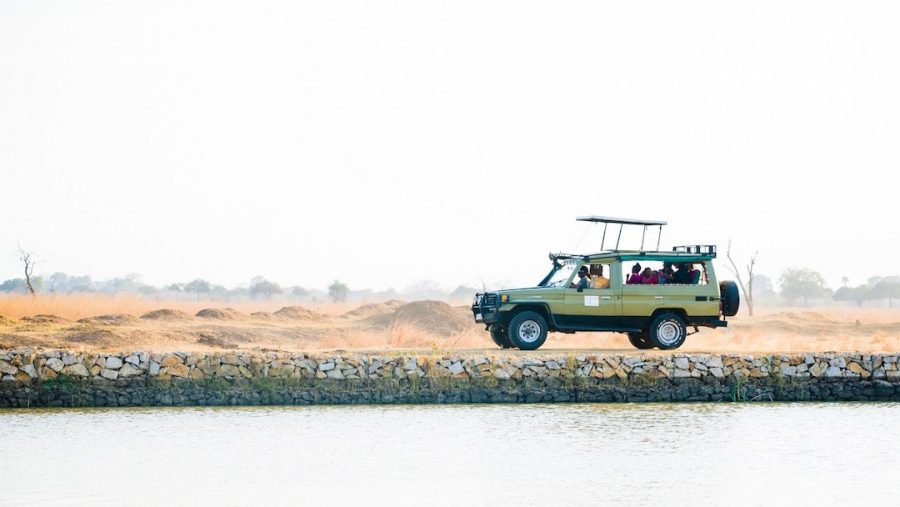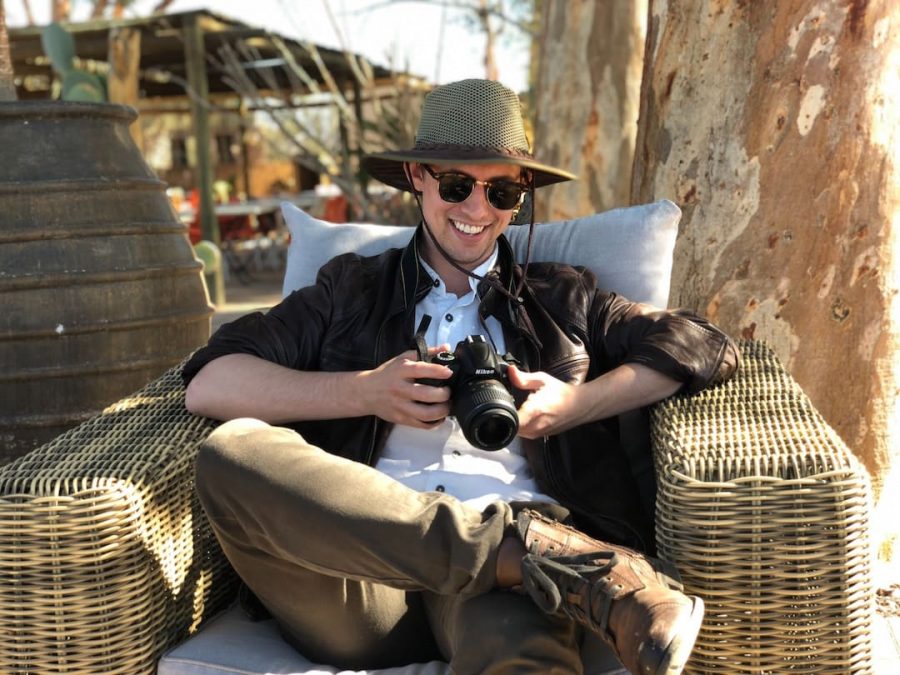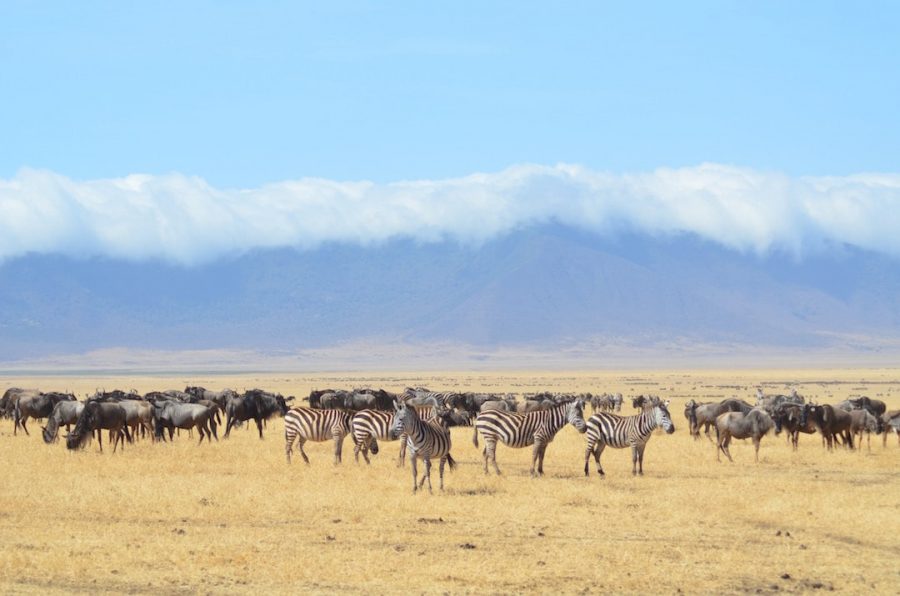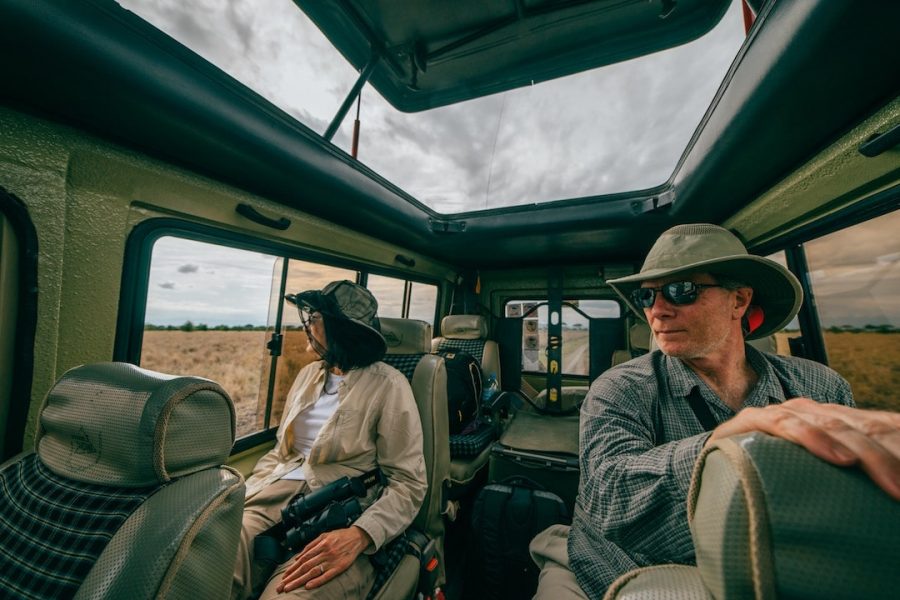Once you’ve experienced a soul-stirring safari adventure for the first time, it’s a trip you’ll never forget. And while it might sound trivial, what you wear during your trip can either make or break your touring experience.
Call me dramatic, but what you wear matters – and no; I’m not talking about how great your outfit looks. Think: practical, useful, and climate appropriate clothing that you need in your life. Pay attention, as this is our extensive guide on what to wear on safari in Tanzania.
Climate in Tanzania and what to wear
The climate of Tanzania is considered to be tropical, yet it varies significantly between regions due to the topography. But no matter the time of the year, or your location in Tanzania, you can expect temperatures to fluctuate significantly throughout the day (think hot and humid during the day to cold and chilly at night). Basically you need to have clothing to cater for all seasons.
Temperature wise, the warmest months are between November through February (25–31°C or 77.0–87.8°F) and the colder months are from May to August (15–20°C or 59–68°F). July and August are the country’s coldest, driest months – and is the best time to visit Tanzania. June through September is another period worth planning your trip around, as they are the prime months for viewing migrating wildebeests and elephants November through February
What should I wear on safari in Tanzania?
Bottoms
Lightweight hiking pants
Once you’ve booked your safari adventure, your first point of call should be your local outdoor apparel store (or at least the online version). Here, you’ll find every type of travel and outdoor pants under the sun for all seasons; each designed to keep you fresh, comfortable, and ready for whatever activities you’re about to enjoy.
Look out for pants that are made of quick-drying, light, stretch-woven fabric. A sturdy pair of hiking pants will cater for all seasons, so regardless of when you travel; this is one item you can’t leave behind.
Score some bonus points if they feature zip-off legs and transform to shorts within seconds. If you want to go all the way and complete the look, stick with neutral colours such as khaki, camel, or tan tones.

Shorts
Similar to the above advice for long pants, you should consider purchasing a comfortable pair of travel shorts for when the temperature rises in the warmer months and long pants just won’t cut it.
If you’re not interested in investing in new shorts or are just generally trying to keep costs down, you can opt for a pair of workout shorts that you may already own. These are sure to keep you cool and most importantly, sweat-free!

Leggings
Activewear is a staple item in the wardrobe of most travellers around the world, and are perfect no matter the weather. So, why not pack a few pairs of tights, leggings, or sweats for those days when you not only want to dress down but also embrace maximum comfort and control.
Tops
Long sleeve tops
If you don’t already own a few long sleeved, sweat-wicking tops, it pays to invest in a few as they are designed to keep you fresh in high temperatures. To keep costs down and save from purchasing a whole new wardrobe, a lightweight shirt will do the trick; as it’s essential to protect yourself from the sun.
Also worth noting is that mosquitoes are a concern in Tanzania, so long sleeved tops act as great shield to protect yourself. Black clothing – despite attracting more heat from the sun – is said to deter mosquitos, so this is worth weighing up.
T-shirts
You don’t want to be stuck wearing long pants or a long sleeve top once the temperature rises. A few t-shirts or singlet tops won’t go to waste and are essential for the days when the temperature skyrockets. If you are wearing a singlet top or a t-shirt, don’t forget to slather on some sunscreen.
Windbreaker jacket
While it’ll be warm in Tanzania for most parts of the year, it will undoubtedly be windy in some parts. A windbreaker jacket is a perfect item to carry with you as it won’t take up too much room, yet will save you from feeling the drop in temperature.
Insulated jacket (depending on the season)
Some jackets are made to cater to either warm temperatures and cold weather with a waterproof shell. Depending on your preference, a warm padded coat should do the trick under your lighter waterproof jacket.

A sweatshirt
Anyone who has enjoyed a safari adventure will tell you that layers are everything! Start with light, breathable layers (long sleeve tops, t-shirts) with your sweatshirt serving as the warm and cosy layer to top it all off.
A skirt or dress
If your safari tour extends all the way through to Zanzibar, you should wear either long trousers, a skirt, or dress, and revealing clothes should be avoided. This is to show respect for the local customs and beliefs. At some religious sites, if you are not dressed appropriately, you may be asked to leave by a guard based on the failure to adhere to local culture and expectations on how to wear.
Shoes
Hiking boots
While not essential, a pair of sturdy, waterproof hiking boots will do wonders for you. Avoid purchasing a brand new pair of hiking boots, as this will result in terrible blisters. A sturdy pair of hiking boots can be expensive, but they are certainly worth the investment as they’re designed to last forever, protect your feet, and give your ankles and back better support.
Sneakers
If hiking boots aren’t the best option for you, a pair of sneakers will do the trick. All you need is a pair of closed-toe shoes to protect your feet. The bottom line is that bushwalking is a large part of most itineraries, so no matter what they look like, a pair of comfortable, closed-in walking shoes are a must. Even more so, closed-in shoes will help to protect your feet from cuts and scratches when walking through the bush, and will also act as barrier protection against bites or stings from dangerous animals in this environment.
Sandals or Birkenstocks
When the end of the day rolls around, and you need to give your feet a break, a pair of sandals, Birkenstocks, or thongs will offer your toes and heels a much-needed airing out.

Items to leave at home
Denim
Forget about it – unless you decide you cannot live without your favourite pair of jeans. Considering denim takes ages to air dry while often being too warm to wear in the day, they are not ideal. Like we said, wear whatever is most appropriate for you, yet if you can avoid packing thick, denim jeans, then definitely do that.
Make-up
The animals of the Serengeti won’t notice whether you’re repping a full face of makeup; and neither will the rest of your group. Of course, do what makes you feel your version of comfortable but at least be certain to layer on a strong sunscreen.
Formal outfits
Even at the the luxury safari lodges, the dress code will be far from formal. Save a few clean shirts to wear at night, and a nice pair of pants or a skirt for the evening, but above all, make sure you’re comfortable!
Expensive jewellery
A big sparkly pair of diamond earrings or a large watch is out of place in the bush, so it’s best to leave these at home. You also don’t want to be the only one loudly jingling and jangling when you’re trying to approach the more timid creatures of Tanzania.
Other miscellaneous items to pack
- Breathable, thermal layers (season dependent)
- Pyjamas to wear at night
- A hat
- A swimsuit
- Socks
- Underwear
- Sunglasses
- Gloves (depending on the season)
- Beanie (depending on the season)
Think we’ve missed something? Check our ultimate packing list for a Tanzanian safari and share your tips on what to wear in the comments below!



